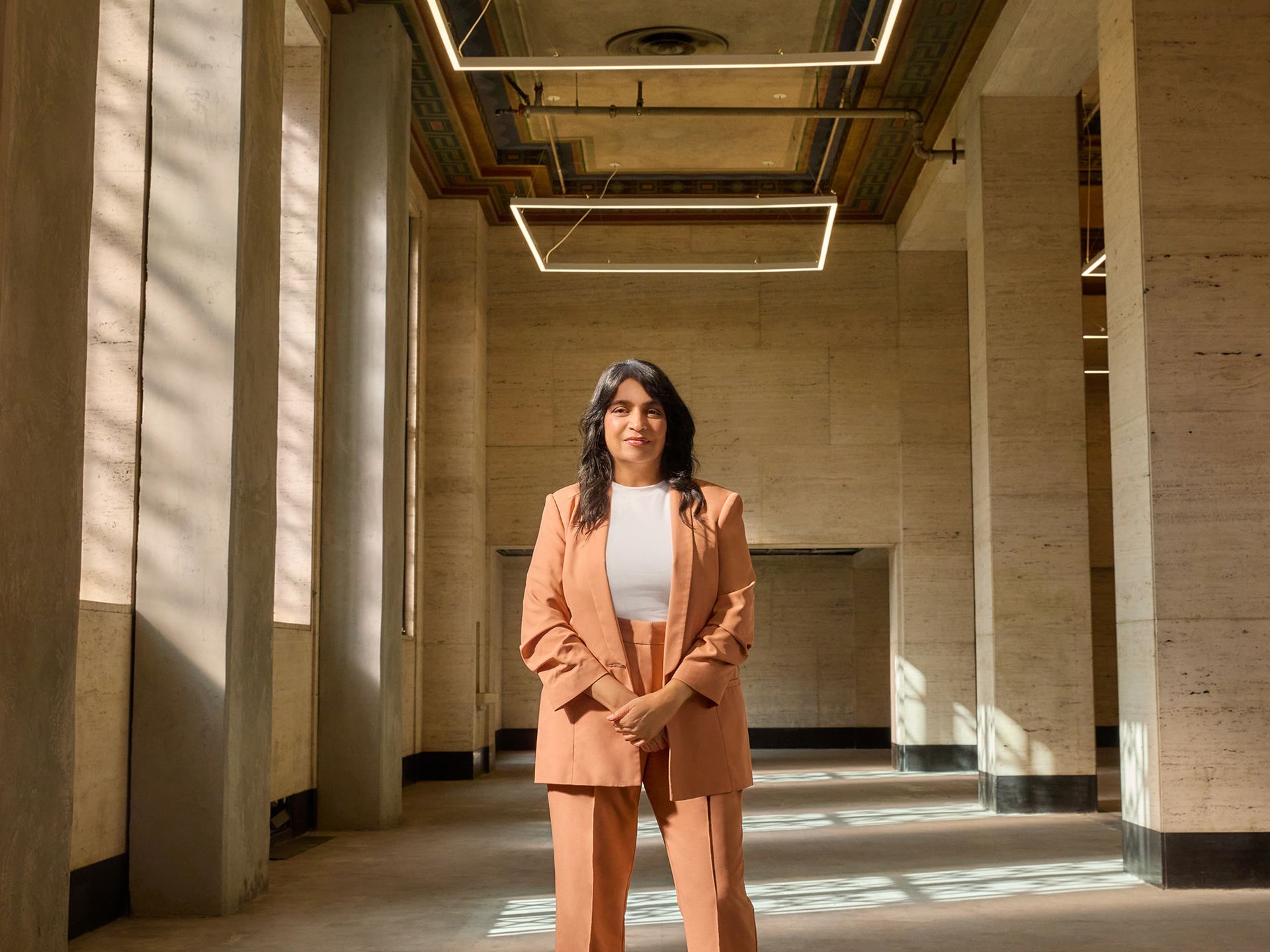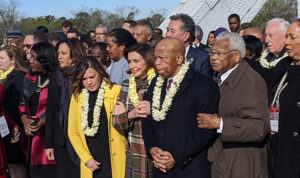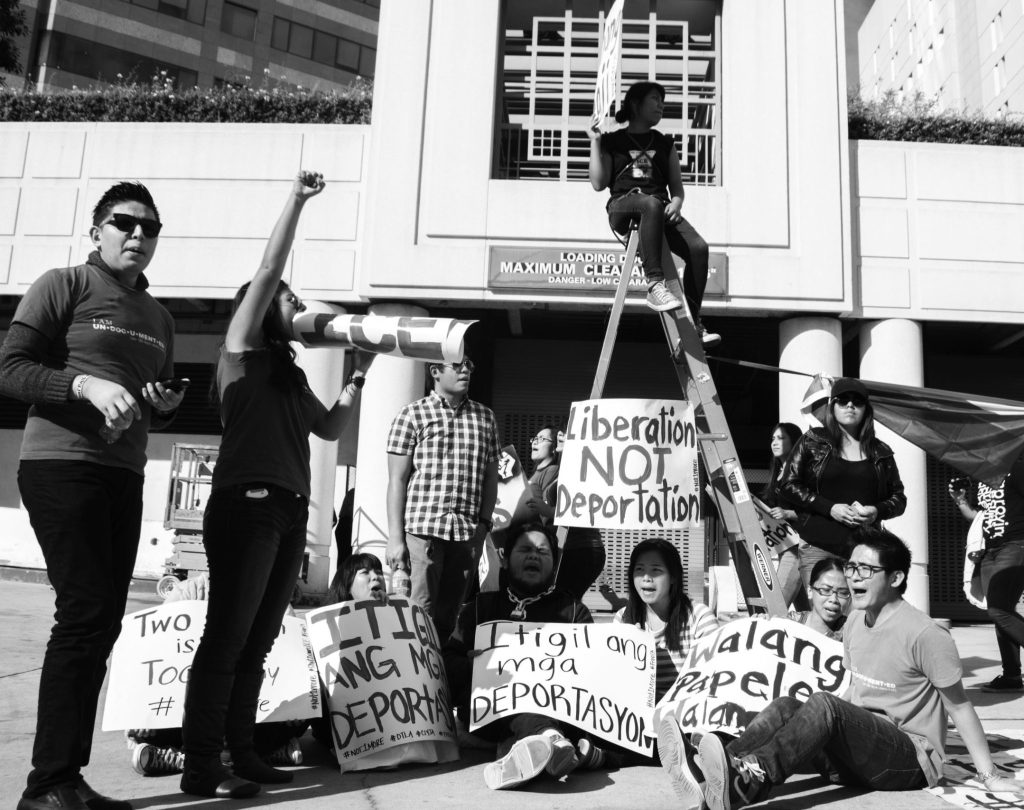
You might say that amplifying the voices of marginalized communities has been Saba Waheed’s life’s work. The Los Angeles native’s journey into labor advocacy, specifically, was not just a professional pursuit but also a profoundly personal one, rooted in both her upbringing and a commitment to storytelling and representation. From childhood, she was driven by a desire to ensure that unheard voices are, well, heard.
Through her volunteer work with advocacy organizations in New York City, Waheed achieved unprecedented victories for both working-class communities and taxi drivers, successes that were the driving force behind her leaving the Ph.D. program at Columbia University to fully dedicate herself to labor advocacy. Upon joining the UCLA Labor Center in 2012 as research director, Waheed merged her passions for research and social justice; the center’s focus on community impact and its history of activism resonated deeply with her. To expand the center’s research capabilities, she implemented the research justice model she had co-developed in New York City.
Last year, Waheed was elevated to the position of center director, taking the helm at a historic moment for the U.S. labor movement. With workers’ rights under new scrutiny and labor activism resurging, she sees an opportunity to push for meaningful change — and a future where workers have a crucial say in shaping the future of work.
Here, she talks about the recent surge in organized labor strikes, the center’s pivotal role in addressing workers’ issues nationwide, and why we all need to pay attention to where we shop.
What initially drove your passion for ensuring the rights of working people?
I grew up feeling very marginalized in mainstream spaces. As a Pakistani immigrant and a Muslim, even in diverse L.A. I experienced moments of ignorance, discrimination and Islamophobia, before it was termed that. I remember slurs about our traditional clothes and negative portrayals of Muslims in books and films, and a feeling of invisibility regarding positive images of brown people.
As a child, I connected with the world through books. I loved storytelling. After college, I worked for a nonprofit publisher of children’s books for people of color. For me, it was about representation and making sure voices are heard.
I can see how your childhood motivated you. What were some early ways you pursued your goal?
While working toward my Ph.D., I did surveys in food pantries in New York. One, with the Urban Justice Center, found that nearly all the FEMA disaster money after the Sept. 11, 2001, attack on the World Trade Center in New York was going to Wall Street rather than the working class. We worked with other local community organizations from Chinatown and the Lower East Side, the working class neighborhoods in lower Manhattan, and used the findings to advocate for aid to expand FEMA aid beyond Wall Street. Later, taxi workers used a similar report I did to get the first fair wage increase for drivers in 10 years. This is where I was completely inspired. I loved research driven by the community. Data became a vehicle for telling a story.
It sounds like justice has been a throughline for you all along.
Yeah — it was always about whose story was not being heard, and how we can make those stories more visible.
You’ve been in your new role as center director for about six months. Can you share insights into those months, and how you intend to capitalize on what you have called a “historic moment” in labor?
We talk about the Labor Center as a connective tissue between the university and the community, and especially the working-class community of Los Angeles. Recognizing that 60-year connection to Los Angeles, I wanted to move our three key tools forward. One is the research justice approach and doing engaged research with community partners. Since I’ve been here, we’ve done at least 40 studies, ranging from fast food to domestic work, nail salons, retail workers and gig workers. These studies tell the story of workers. The second is our schools-to-movement program, where fellowships place students and young leaders in community organizations, unions and immigrant rights groups to learn research, organizing and campaign skills for social change. The third tool we call “narrative change.” The Labor Center started a podcast, Re:Work, to talk not only about problems with work, but also about who the worker is, to show that workers are whole beings.
So, what we do is already amazing. I just want to strengthen it. At this historic moment in labor, I want to make sure we’re a strategic partner in the efforts for change — that we contribute to this labor resurgence and level of momentum that we haven’t seen in decades.
Alongside that momentum, we’ve seen some negative trends, like stagnating wages and income volatility. How do you see labor unions evolving to address those?
A lot of last year’s organizing came out of a movement that has been building over time, and it was amazing to have it emerge all at once. Some of that was because of COVID and the heightened awareness of working conditions and people losing their lives at work.

True. Hundreds of thousands of workers died in the pandemic.
Yes. And there’s been a shift in thinking you can negotiate your working conditions individually versus collectively. [Ensuring workplace] health and safety and access to protective equipment is not an individual negotiation. Workers need to come together and demand these things. WGA being supported by SAG amplified its negotiating power. We also saw this with the striking LAUSD workers and the teachers who struck in solidarity. There’s a renewed confidence in union strength and in building more visibility around the whole worker, not just negotiating working conditions.
Looking ahead, do you expect that confidence to grow? And how can the Labor Center emphasize the whole worker?
Whenever big technological changes or societal changes, like COVID or AI, shift our work practices, we want to ensure that workers are at the table to shape the future of work. That future can’t be negotiated individually. It requires a collective response.
Ten years ago, the gig economy was a free-for-all. Experimentation overrode the need to regulate. But then you saw all this backtracking because of serious labor and safety issues. We have a workforce development program at the Labor Center that addresses equity in work transitions and pipelines. The work will always be evolving, so we want to make sure workers have real power in shaping how the work will change.
Do you think we’ll always have a tug of war between workers and the “big bad companies” who get bigger at the expense of workers’ rights, or will we reach a place where companies say, “Hey, I’m going to do this before someone forces me to?”
I think it’ll be both, where some do it on their own and some you must force through policy. It’s rarely voluntary. But there are high-road partnerships that fund training programs requiring the involvement of all stakeholders. They put companies and worker organizations together to figure out the training pipeline for their industry.
So how can we, as consumers, support that?
One of my criteria for shopping [anywhere] is that they treat workers well.
So patronizing companies that treat employees well can help the labor market.
Yes. And it’d be very powerful if we could do that on a mass scale, incentivizing the company to hold “principle versus profit.”
Eyes are often on California to see what it’s doing policy-wise. How does the Labor Center lead the conversation around workers’ issues nationwide?
Many of our partners are testing new ways to think about labor policies. We want to document these efforts as case studies and evaluate how they could be replicated beyond L.A. The challenge is that in L.A., the government is willing to put forward labor-friendly policies and support a strong labor movement and higher union rates than elsewhere. Ultimately, it’s getting people to consider what a worker-centered process would look like in their state, then giving them the tools to create it.
Speaking of policy, we have a very important election coming up. What should pro-labor voters consider when looking at candidates’ platforms?
Many unions and state labor federations put out legislative scorecards. It’s worth finding those for your state. They’ll talk about how candidates voted during their terms and which were labor friendly. And if you’re also interested in immigrant rights or gender rights, will these representatives further that cause, or how ingrained are they in the corporate lobbying side versus the worker side? The best way to know who to vote for is to look at their record and see how much they’re speaking about labor and why that should be a priority.



